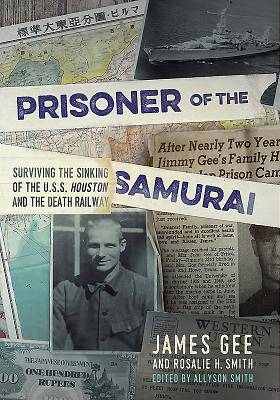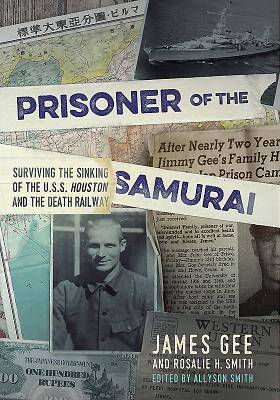
En raison d'une grêve chez bpost, votre commande pourrait être retardée. Vous avez besoin d’un livre rapidement ? Nos magasins vous accueillent à bras ouverts !
- Retrait gratuit dans votre magasin Club
- 7.000.000 titres dans notre catalogue
- Payer en toute sécurité
- Toujours un magasin près de chez vous
En raison de la grêve chez bpost, votre commande pourrait être retardée. Vous avez besoin d’un livre rapidement ? Nos magasins vous accueillent à bras ouverts !
- Retrait gratuit dans votre magasin Club
- 7.000.0000 titres dans notre catalogue
- Payer en toute sécurité
- Toujours un magasin près de chez vous
Prisoner of the Samurai
Surviving the Sinking of the USS Houston and the Death Railway
James Gee, Rosalie H Smith
Livre relié | Anglais
34,95 €
+ 69 points
Description
James Gee was fresh out of college at the University of Texas and making plans for his future when World War II interrupted these happy pursuits. He and his friends joined the U.S. Marine Corps in 1940 and after training he was posted to the U.S.S. Houston. At first, assignments in Hawaii, Guam and the Philippines--whilst instructing him in the rough and tumble of crew life--were free of encounters with the enemy. But then in 1942 the Houston was first attacked during the battle of the Flores Sea and subsequently sunk by the Japanese fleet during the battle of the Java Sea. Witnessing the last moments of the great ship, Gee survived a prolonged period in the sea clinging to a makeshift raft, before being picked up by a Japanese ship. But this was just the beginning of his ordeal. Initially held prisoner in Java and forced to load and unload enemy ships, he was then transferred to Burma where he worked on the notorious "death railway," living on the banks of the River Kwai. Those who survived the hard labor and harsh conditions there would be sent on to Thailand, then Singapore before arriving in Japan in 1945. There, they spent the last few months of the war working in coal mines just 40 miles outside Nagasaki. The dire circumstances of Gee's incarceration were only overcome through the compassion and companionship of fellow detainees and his determination to endure. After his liberation, he was sent to Guantanamo Bay Naval Hospital, Cuba. There, he encountered Rosalie Hamric Smith R.N., who was serving as Charge Nurse in the Psychiatric Ward, and who helped him to record his experiences as part of his treatment. Rosalie worked his accounts into a manuscript which, following her sudden death, languished in an attic for over thirty years. Now rediscovered, James Gee's incredible story can be told to a new generation.
Spécifications
Parties prenantes
- Auteur(s) :
- Editeur:
Contenu
- Nombre de pages :
- 224
- Langue:
- Anglais
Caractéristiques
- EAN:
- 9781612005973
- Date de parution :
- 08-03-18
- Format:
- Livre relié
- Format numérique:
- Genaaid
- Dimensions :
- 152 mm x 229 mm
- Poids :
- 476 g

Les avis
Nous publions uniquement les avis qui respectent les conditions requises. Consultez nos conditions pour les avis.






